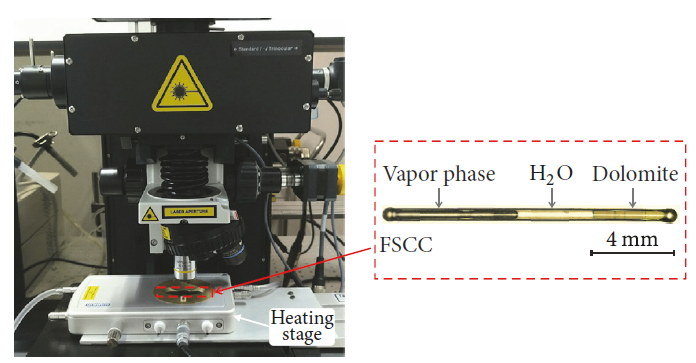An Experimental Study of the Formation of Talc through CaMg(CO3)2–SiO2–H2O Interaction at 100–200∘C and Vapor-Saturation Pressures
Researchers use the Linkam CAP500 with fused silica capillaries to study the formation of talc, observing the process using techniques such as Raman spectroscopy and X-ray diffraction.
Full Open Access article available via CC BY 3.0.
Wan, Ye, et al. "An Experimental Study of the Formation of Talc through CaMg (CO3) 2–SiO2–H2O Interaction at 100–200 C and Vapor-Saturation Pressures." Geofluids 2017 (2017).
Study of SO2/water and NO/water/salt systems from 25 to 150 °C using fused silica capillaries, batch autoclave and Raman microspectrometry
Researchers use the Linkam CAP500 to study the thermodynamic behaviour of CO2 capture systems, usingfused silica capillaries under Raman spectroscopy.
Operando micro-spectroscopy on ZSM-5 containing extrudates during the oligomerization of 1-hexene
This article studies the impact of the binder material in industrial catalysts. Using the Linkam TS1500V to perform catalytic reactions at 250 and 300°C, the authors used operando spectrocopy and in situ confocal fluoroscence microscopy to show how different binder materials affect the final material composition.
Phase transitions in secnidazole: Thermal stability and polymorphism studied by X-ray powder diffraction, thermal analysis and vibrational spectroscopy
Here, researchers use techniques such as Raman spectroscopy, X-ray powder diffraction and hot stage microscopy with Linkam’s FTIR600 to observe the dehydration process of the antimicrobial drug secnidazole, which aids quality control and development of solid pharmaceutical formulations.
Read the full paper here (access required).



